5 MHz is the frequency of the quartz based oscillator. I get a clean, sine wave output. I would like to (divide) this signal into several, lower frequencies in steps, e.g. 1kHz, 100Hz and 1Hz. I don't want to use a microprocessor but an analog circuit instead.
-
Please edit your question and show your own work, ideas and findings so far. At the moment, this is a couple of lines that read as expecting a long and detailed circuit design in return. – TonyM May 06 '23 at 21:04
-
1What is the purpose of the signals? What level of distortion is allowed? What peak-to-peak voltage do you require? Please edit this information into your question rather than bury it in the comments. – Transistor May 06 '23 at 21:38
-
@Transistor the purpose of this circuit is to create a "reference bank" of several audio frequencies that will be used to tune synthesisers. – Jerzy Przezdziecki May 07 '23 at 07:50
-
1Use DDS products. – Andy aka May 07 '23 at 09:18
4 Answers
You could use a DDS chip such as AD9837 to create a sine wave directly from the 5MHz clock (preferably with a bit of filtering on the output).
at a 5 MHz clock rate, the AD9837 can be tuned to 0.02 Hz resolution.
You would need something with a 3-wire SPI interface to configure the chip at power-up.
- 376,485
- 21
- 320
- 842
-
2Yep, and the configuration can be done using an auxiliary oscillator and a bunch of shift registers in series, with dip switches (can be rotary ones) to set things up. I've done that and it's a beautiful kludge but pretty robust. – Kuba hasn't forgotten Monica May 06 '23 at 21:45
Do you want sine waves as the output? If so, there are several viable approaches:
Have voltage-controlled-frequency sinewave oscillators, and control their frequency using a PLL referenced to the 5MHz oscillator. E.g. a Wien bridge oscillator for each frequency, and use a vactrol and a PLL to keep its frequency and phase slaved to the 5MHz reference.
Divide the 5MHz down to desired frequencies using digital dividers, then low-pass the square waves to yield sine waves.
Use a counter, a bunch of magnitude comparators, and a wide-input XOR gate (parity generator) to make magic sine waves, then low-pass filter them using a low-order lowpass. The magic sinewave pulse trains only have the fundamental and very high harmonics, with nothing in-between, so should be easy to do.
Use a high frequency VCO and a PLL to generate 5MHz+Δf, then mix the two and low-pass the output.
Use a direct digital synthesis chip capable of low frequency output. The chip can be initialized using a long parallel-input, serial-output shift register with inputs set to configure the frequency as needed.
For #1, another approach might be to make a Bubba oscillator - four stages that shift 45° in phase in series - using an op-amp with current-controllable bandwidth. An LM146/LM346 would work well as an oscillator - it's a quad op-amp with bandwidth adjustable with a control current. A PLL's output would control the current source biasing the op-amp.
For #2, design 4th-order op-amp-based low-pass filters using a tool, then implement them, and you should get a reasonable-enough sine wave.
5 MHz is the frequency of the quartz based oscillator. I get a clean, sine wave output.
Just because you have a 5MHz sine wave doesn't mean it can be directly "converted" to a lower frequency. In almost all viable approaches, that sine wave will be either fed to a PLL as a reference input, or will have to be converted to a square wave to feed digital circuits.
And also there's no way to say how "clean" the output is unless you show spectrum analyzer plots.
- 32,734
- 1
- 38
- 103
-
The approach numer 2. was my first idea - I should mention it in my question. Thanks a lot. – Jerzy Przezdziecki May 06 '23 at 21:45
-
@JerzyPrzezdziecki #2 and #3 are very similar. #3 uses more digital logic but has much lower distortion since even a first-order filter will get rid of higher harmonics to a good degree. A 5MHz clock may be a bit on the low side for #3 though. The faster the clock, the better. – Kuba hasn't forgotten Monica May 06 '23 at 21:47
-
#2 is fine for generating a square wave from 5Hz to 5MHz. But now you'll have to open a new question along the lines of "How can I design a low pass filter that can sweep from 5Hz to 5MHz?" – td127 May 07 '23 at 04:26
-
1@td127 Assuming a fixed frequency it'll be no problem. One classic solution is a switched-capacitor filter running synchronously with the square wave source. The MFxx filter family from NatSemi did that. There are modern replacements although they need more external parts. – Kuba hasn't forgotten Monica May 07 '23 at 06:17
-
@td127 - No, I don't think I need so wide range LPF. I would rather filter just a few, selected frequencies. For example I can create a 7490 combined divider circuit and filter only selected frequency outputs. That's what I have in mind at the beginning. – Jerzy Przezdziecki May 07 '23 at 07:47
How about using another sine wave oscillator at 5.1 MHz to get the 100 kHz difference frequency:
Here is the simulation to get 100 Hz. For such small differences in frequency, two 5 MHz crystal oscillators could be used, and frequency tweaked using various trimmer capacitors.
- 7,195
- 1
- 7
- 23
From the comments:
... the purpose of this circuit is to create a "reference bank" of several audio frequencies that will be used to tune synthesisers.
Then you don't need sine waveforms. Also, I suspect, that tuning in octaves would be more useful and they're obtained by dividing by two. e.g., using standard tuning of A440 you might use 55 Hz, 110 Hz, 220 Hz, 440 Hz, etc.
Figure 1. The 4020 makes octave division very simple. Image source: Electronics Club.
All that is required is to choose a master oscillator frequency that is a power of two multiple of the chosen note. This is much simpler than any analogue circuit.
e.g. 1kHz, 100Hz and 1Hz.
1 Hz isn't in the audio band - for humans, at least.
- 168,990
- 12
- 186
- 385


